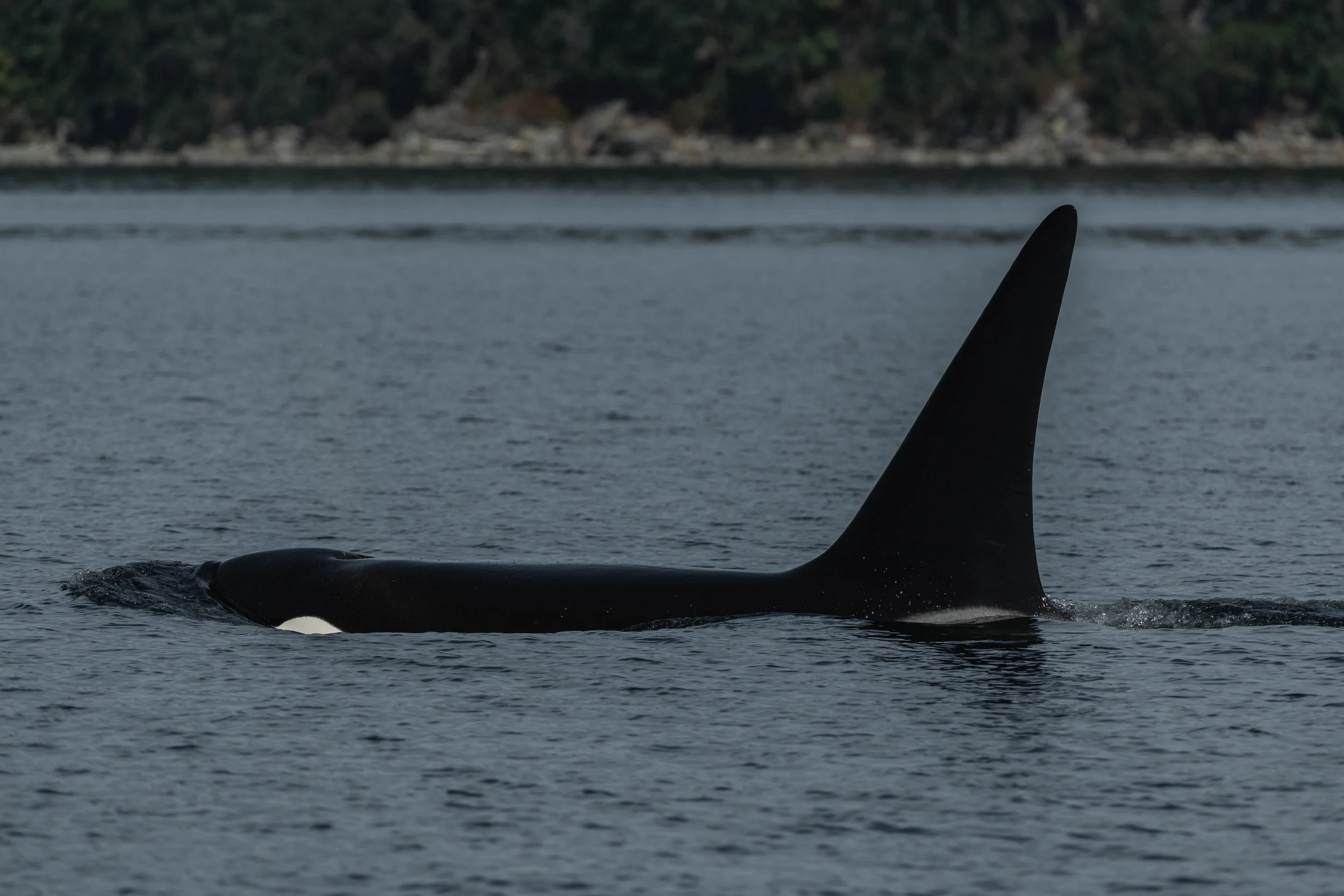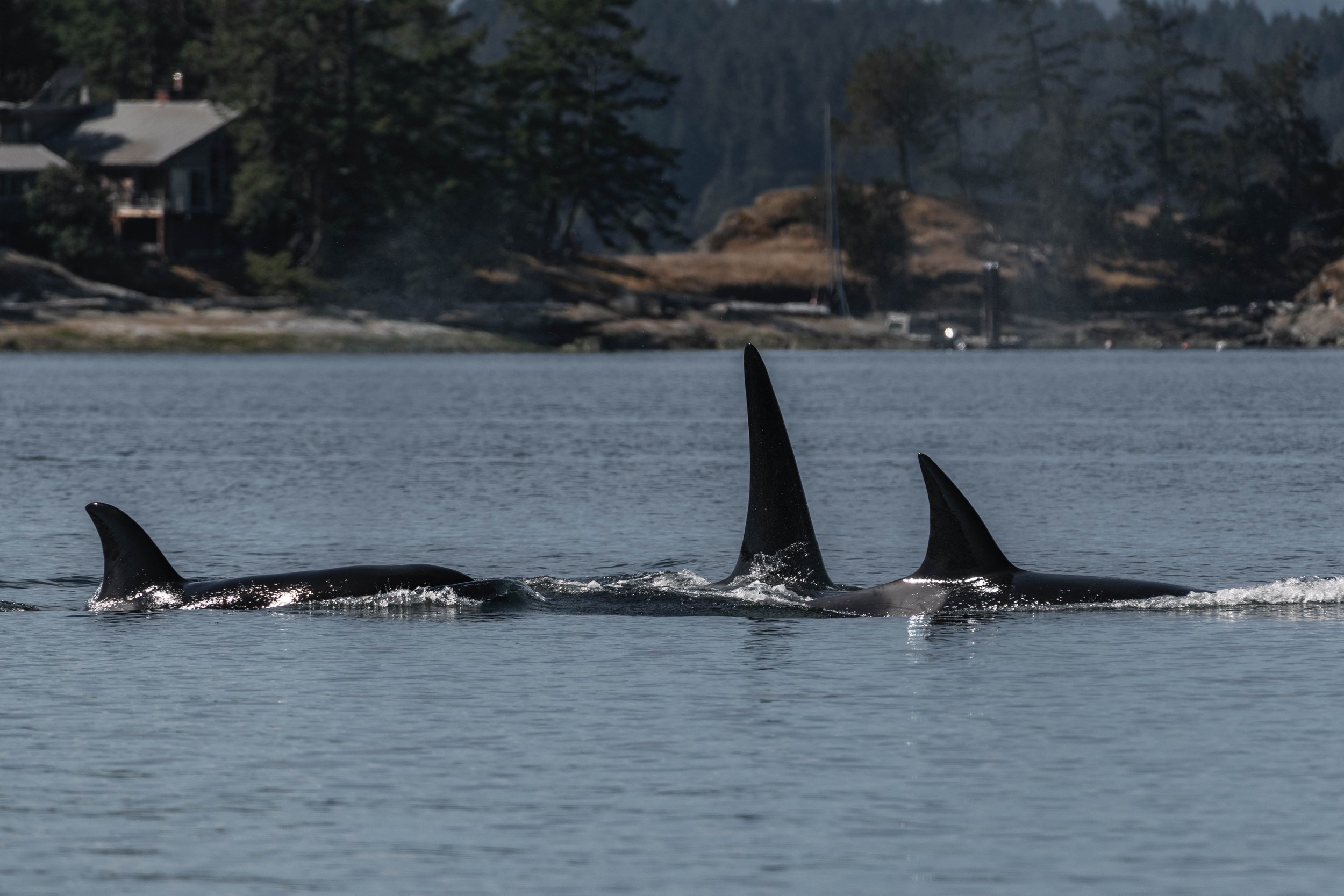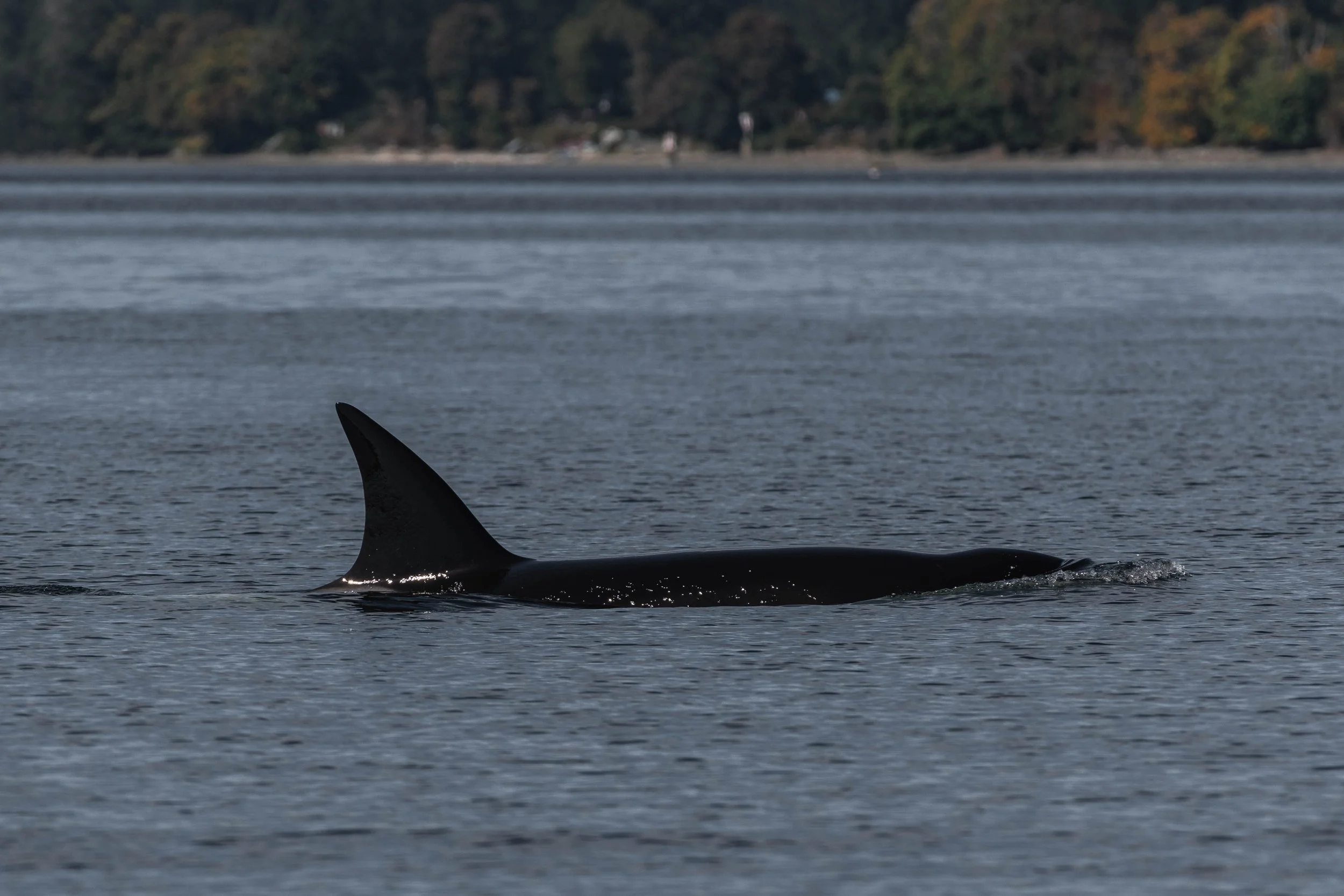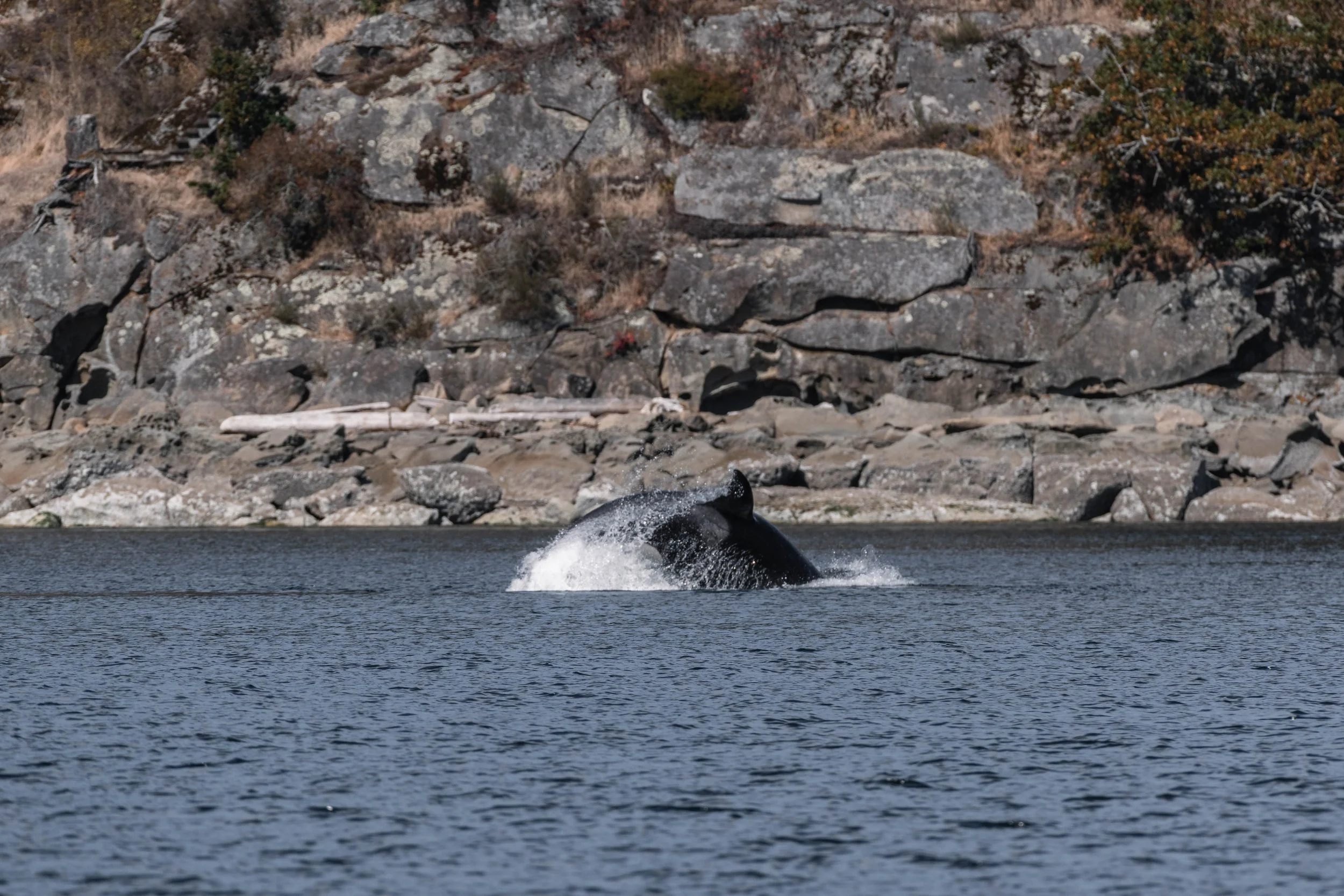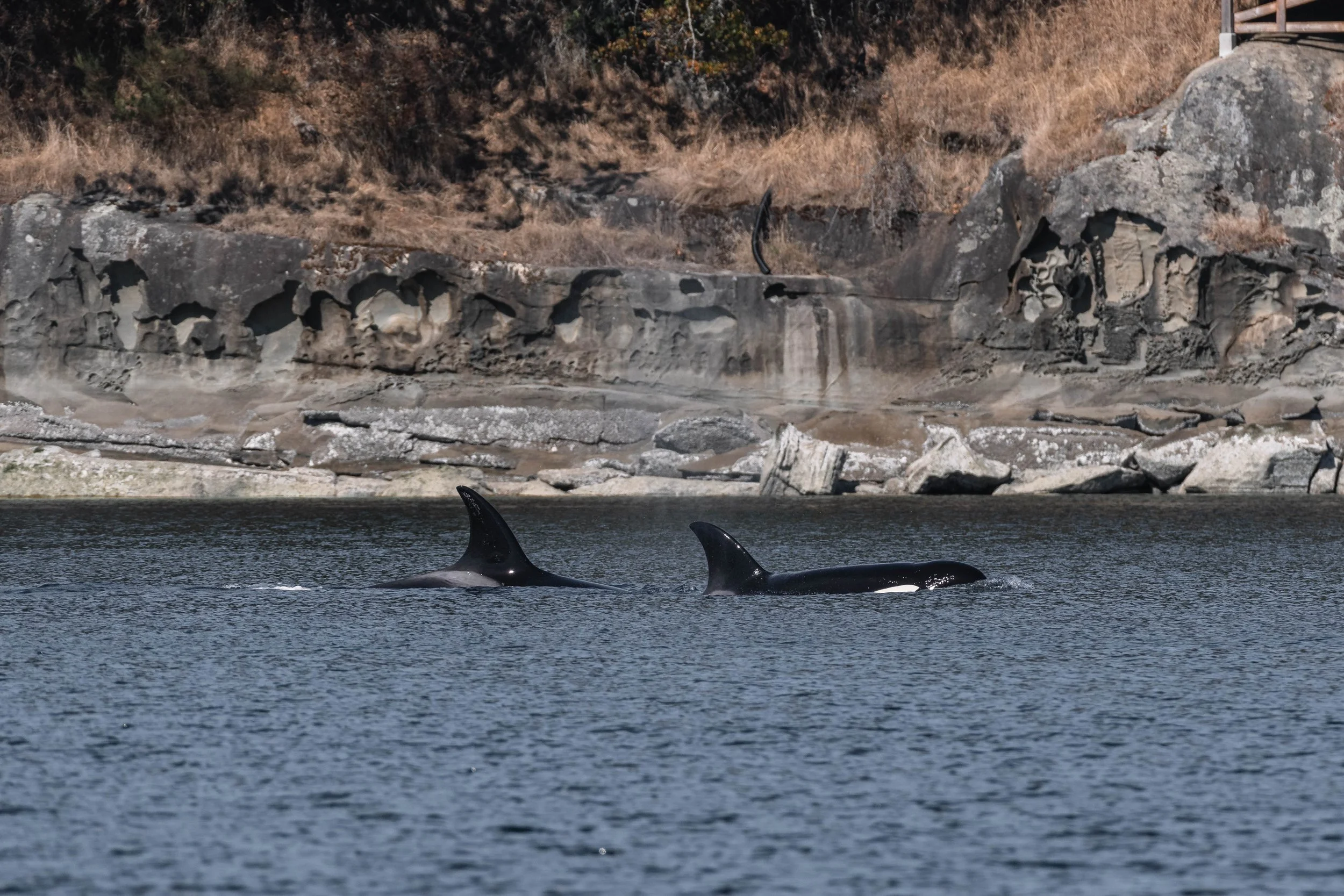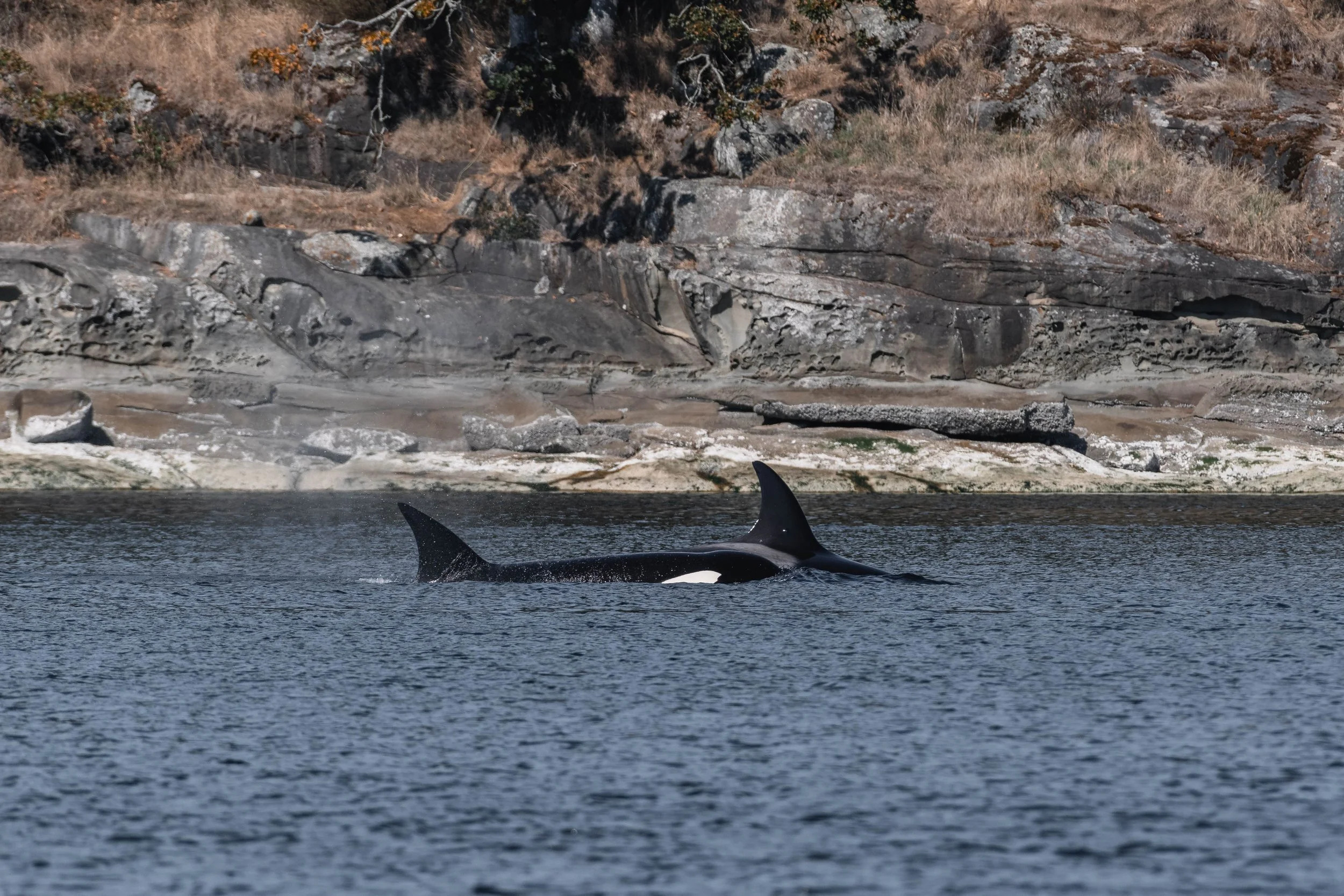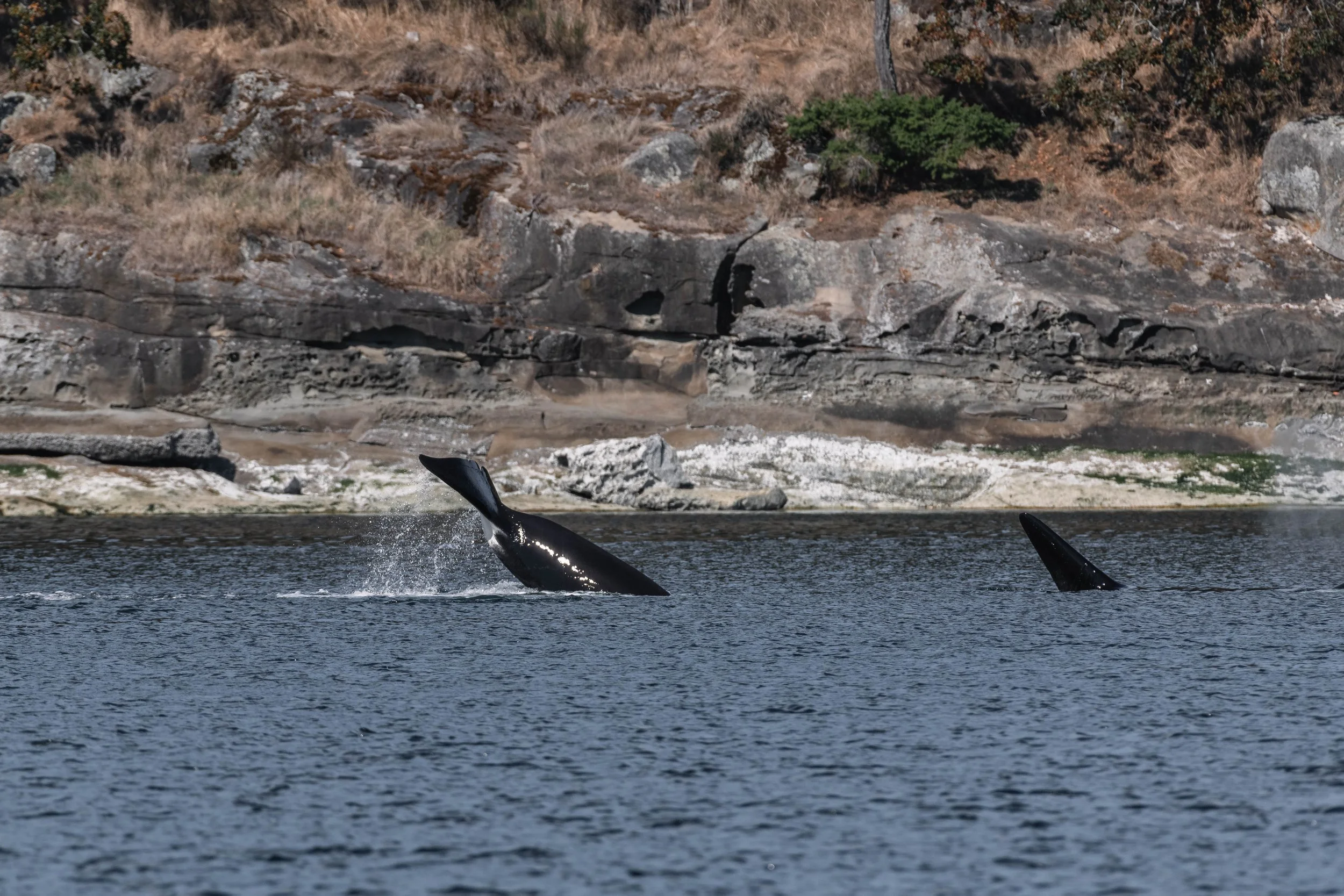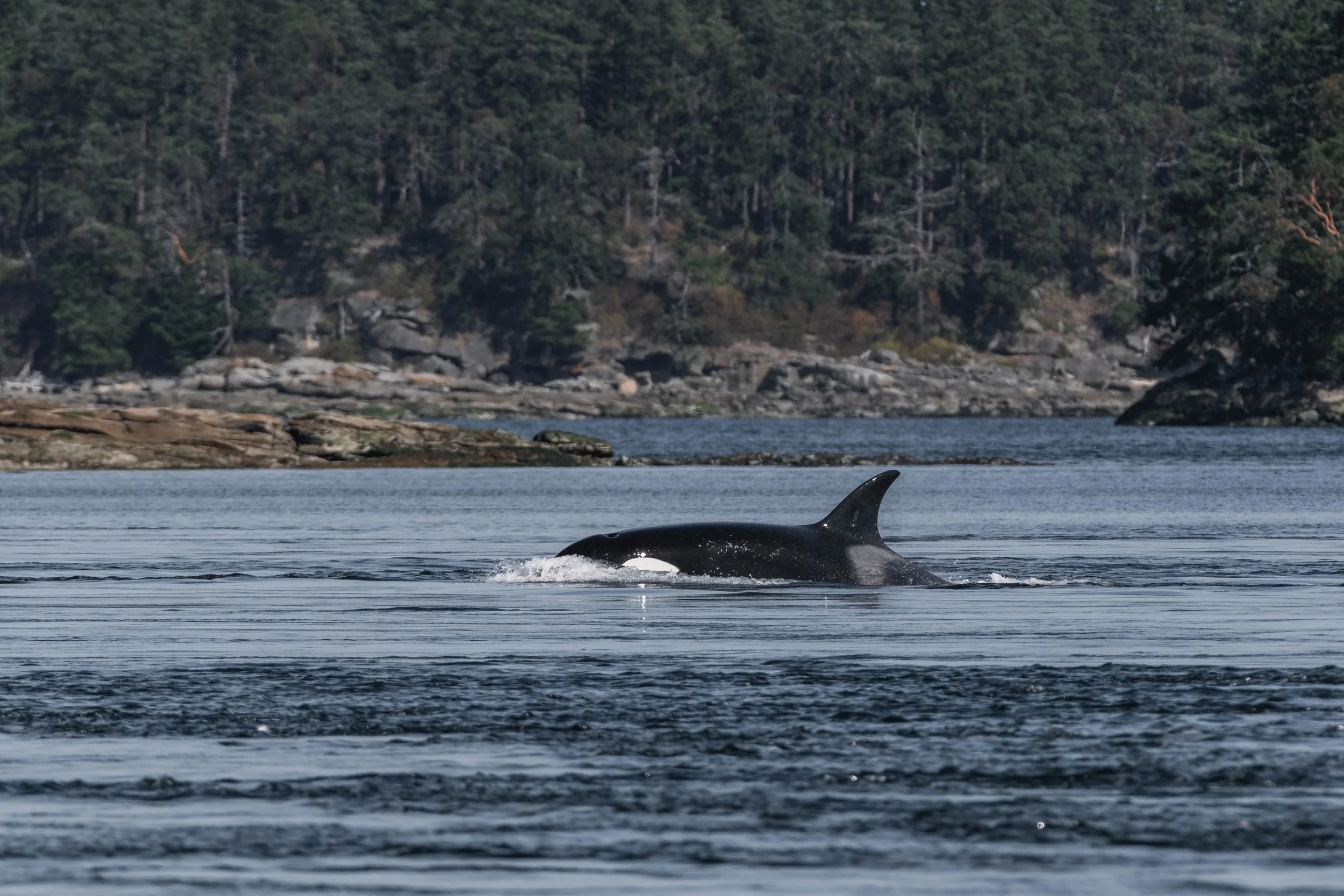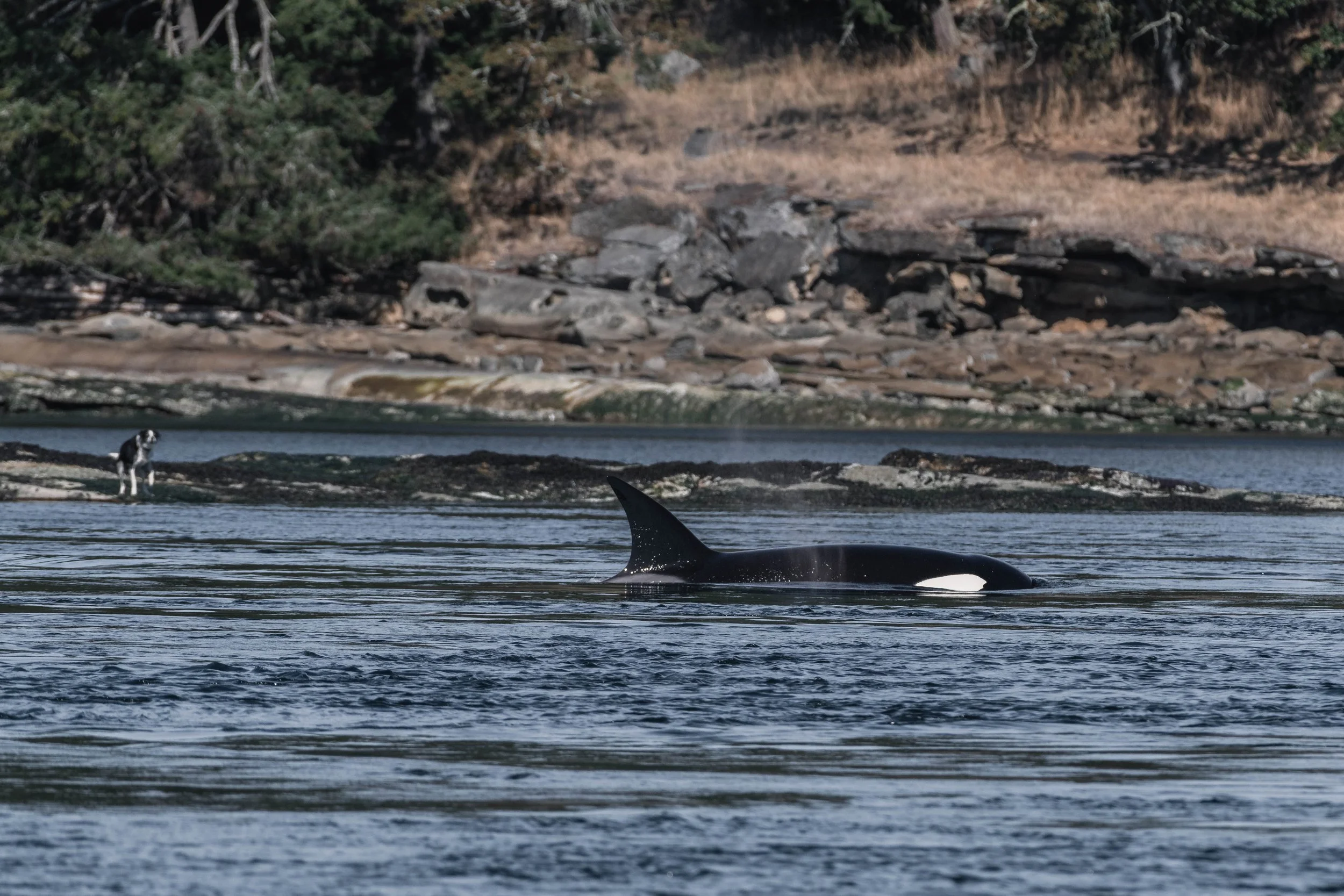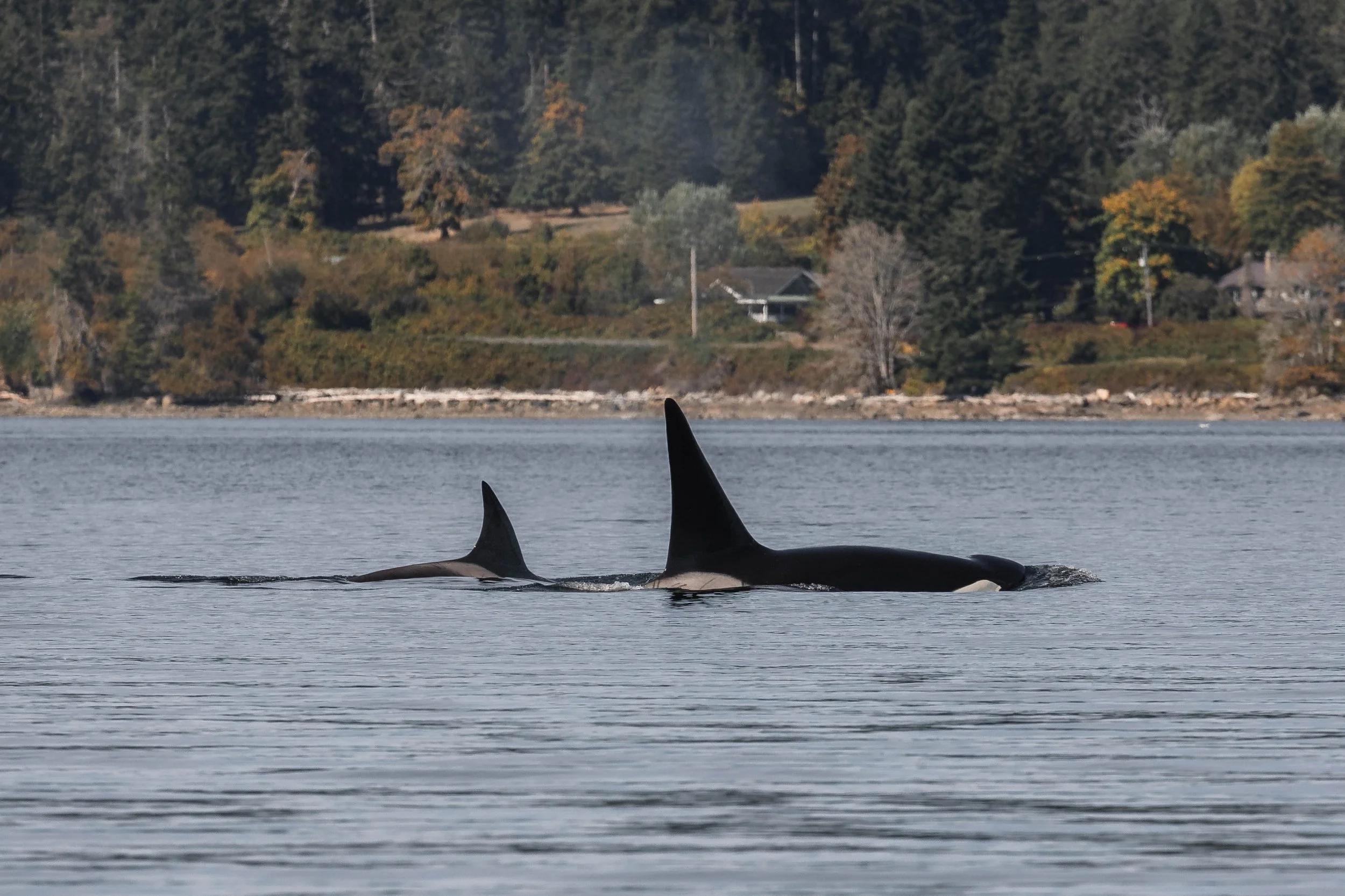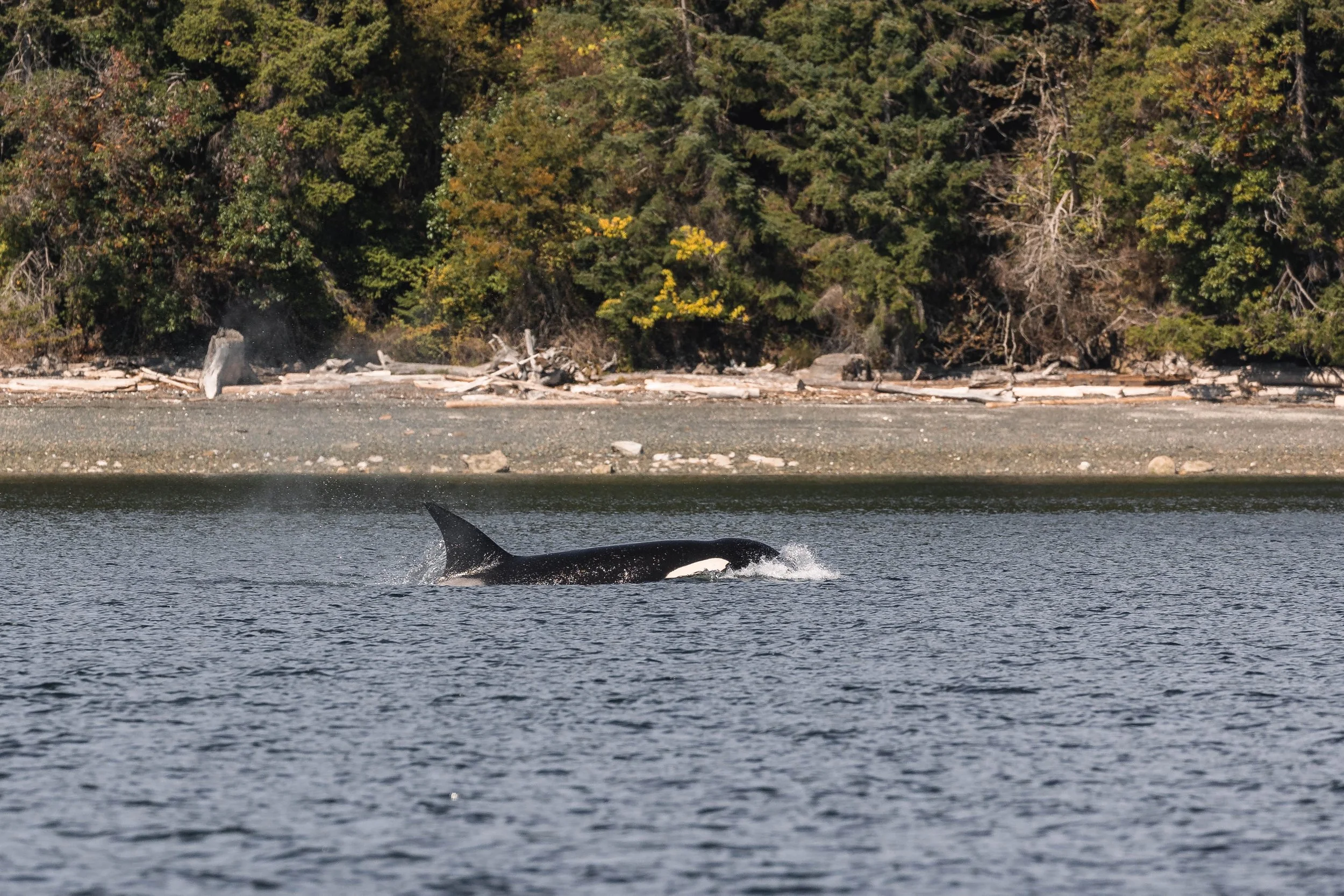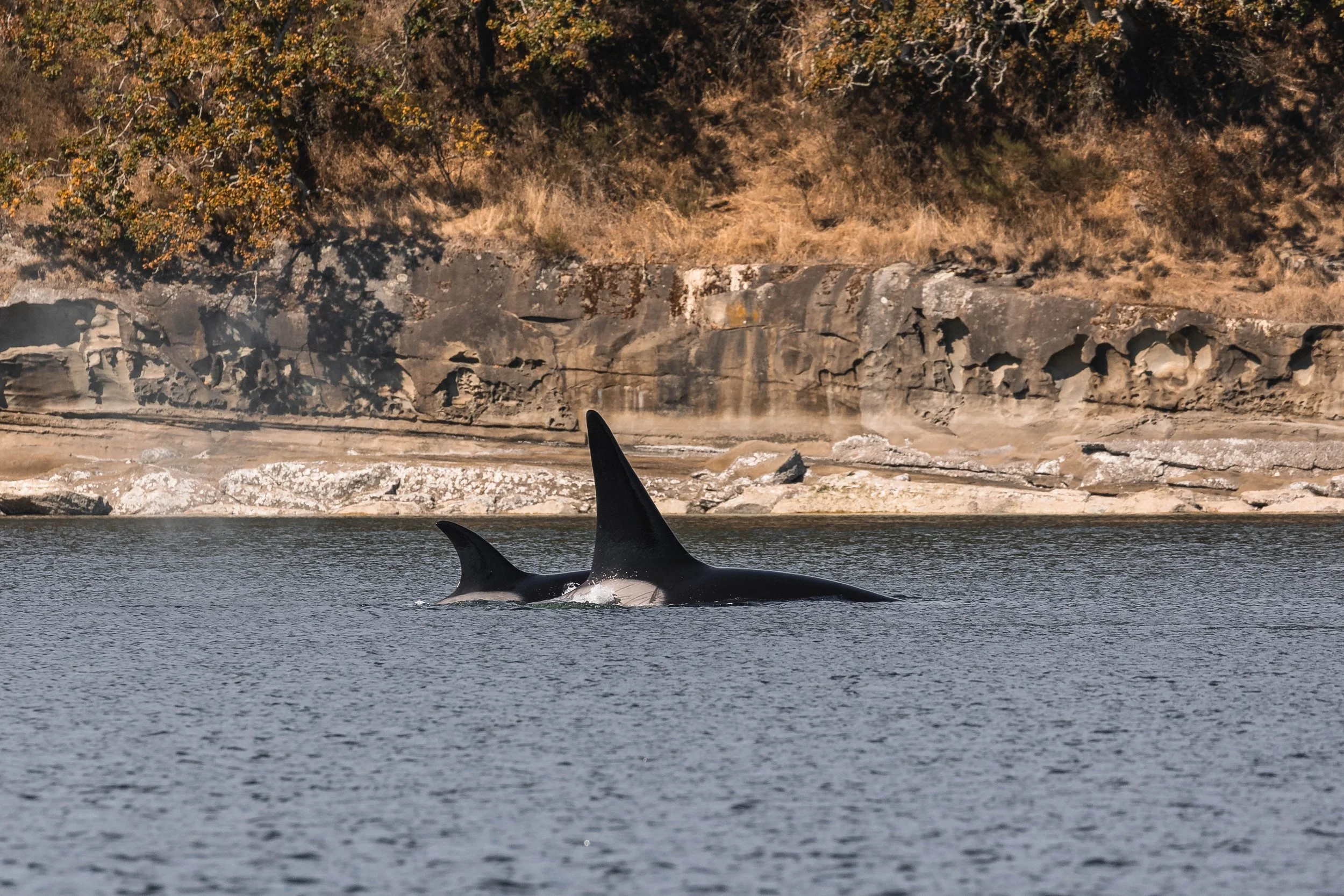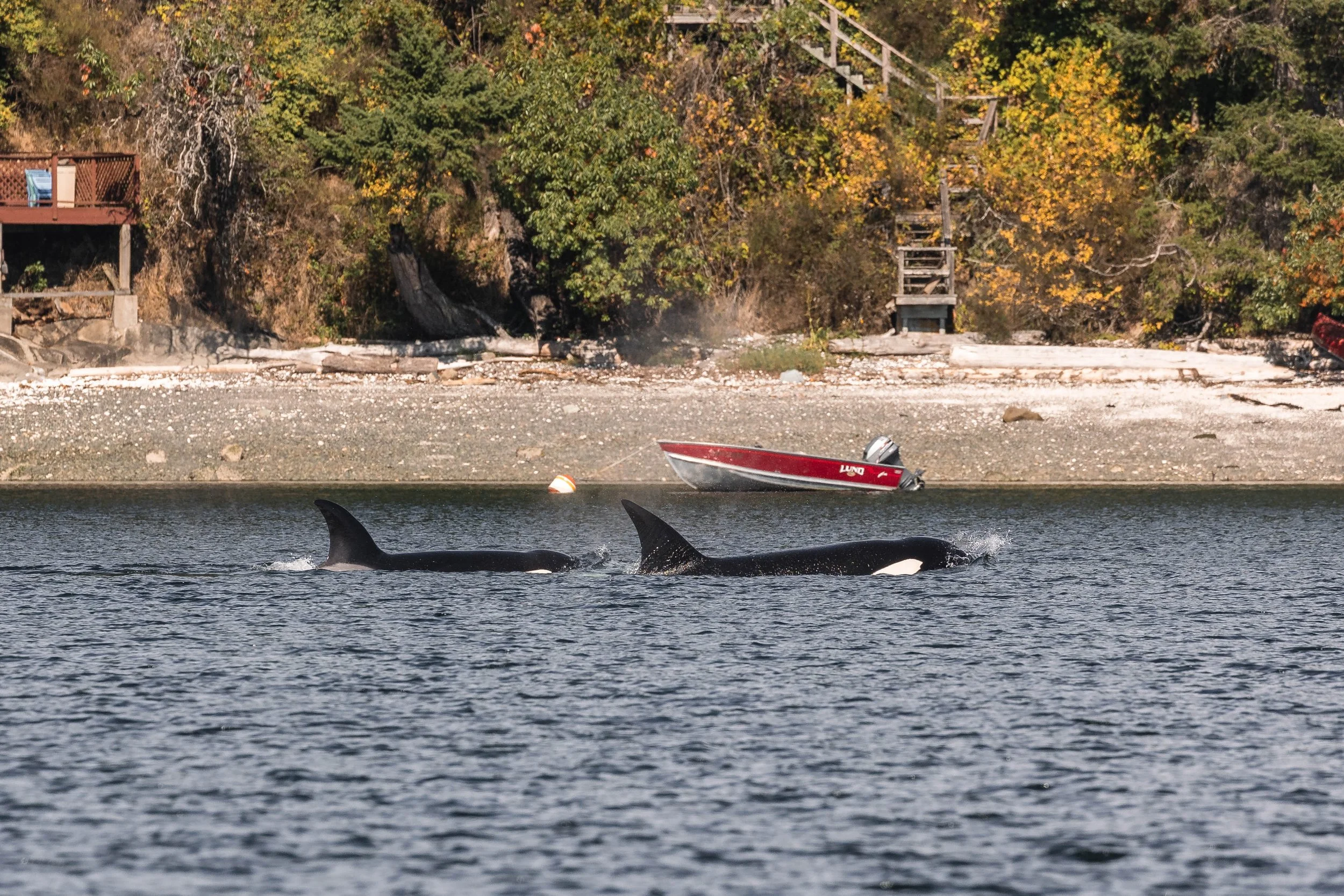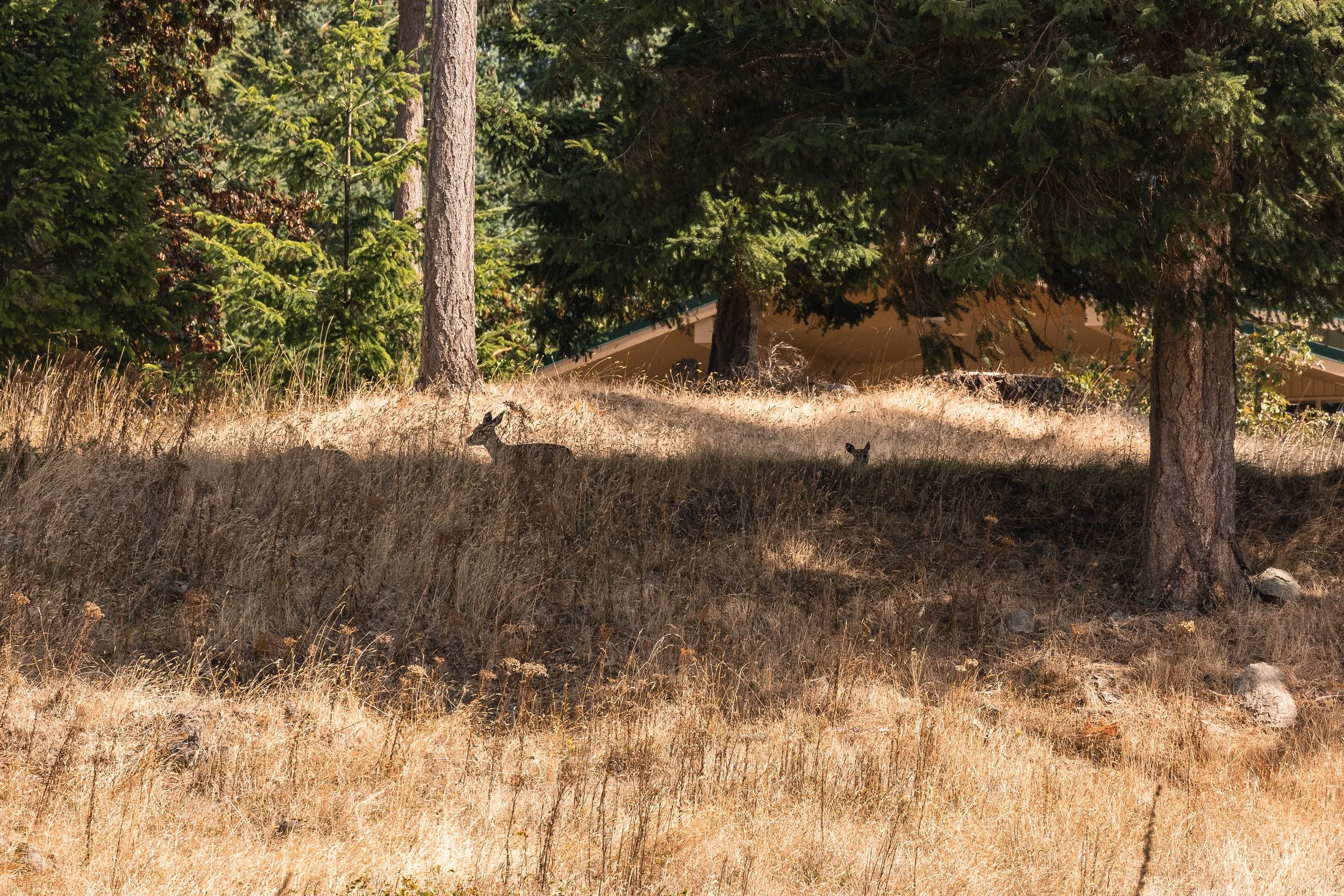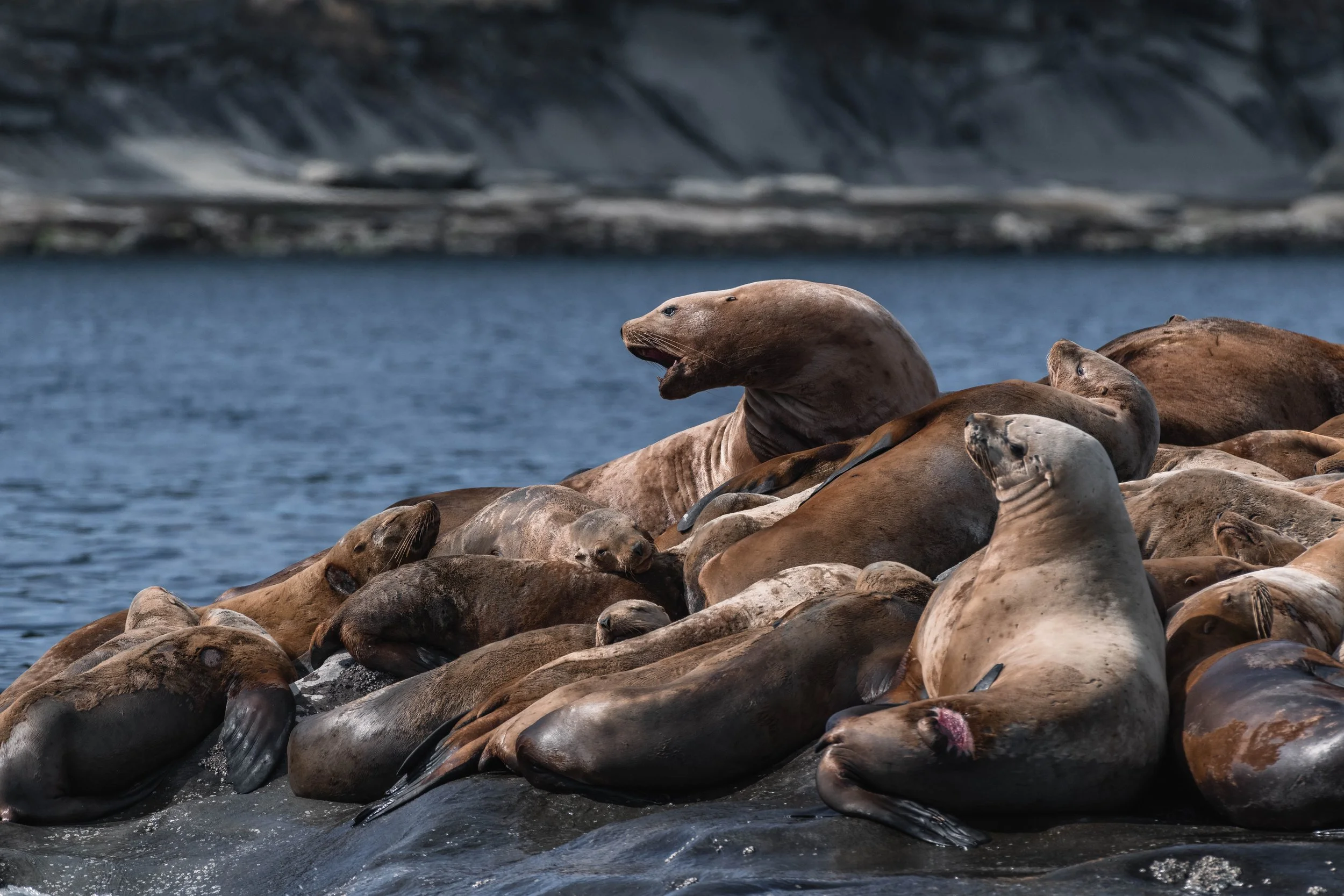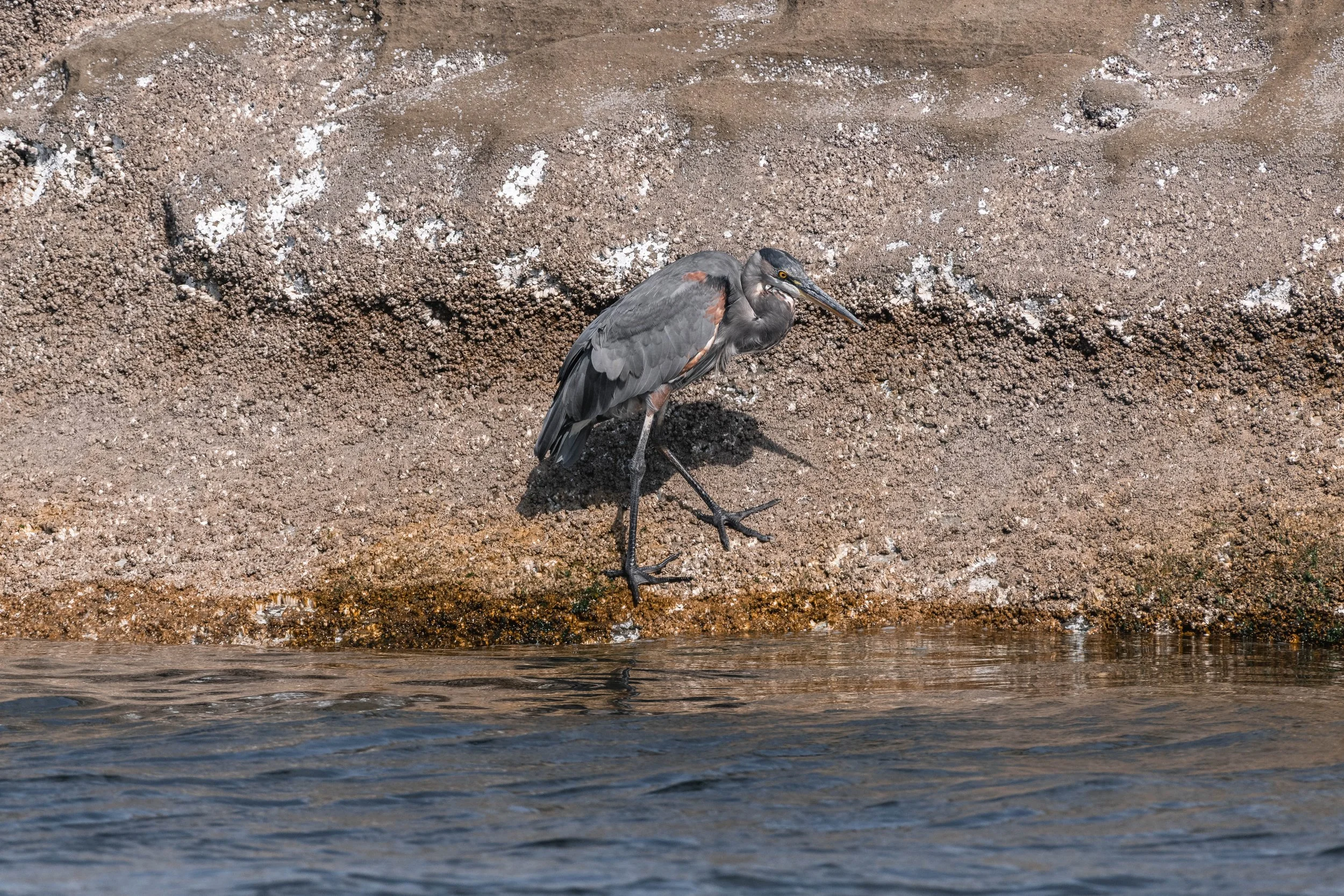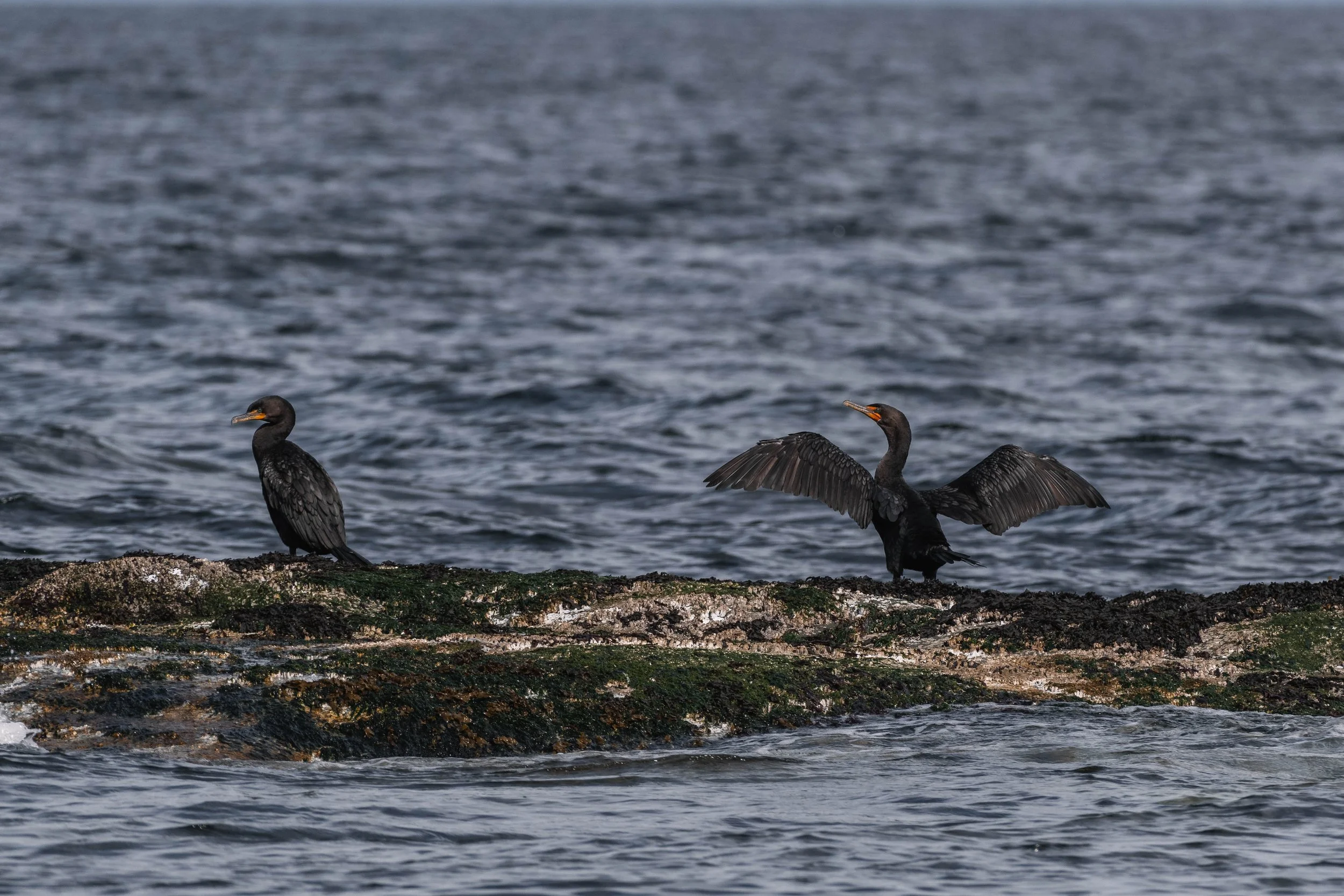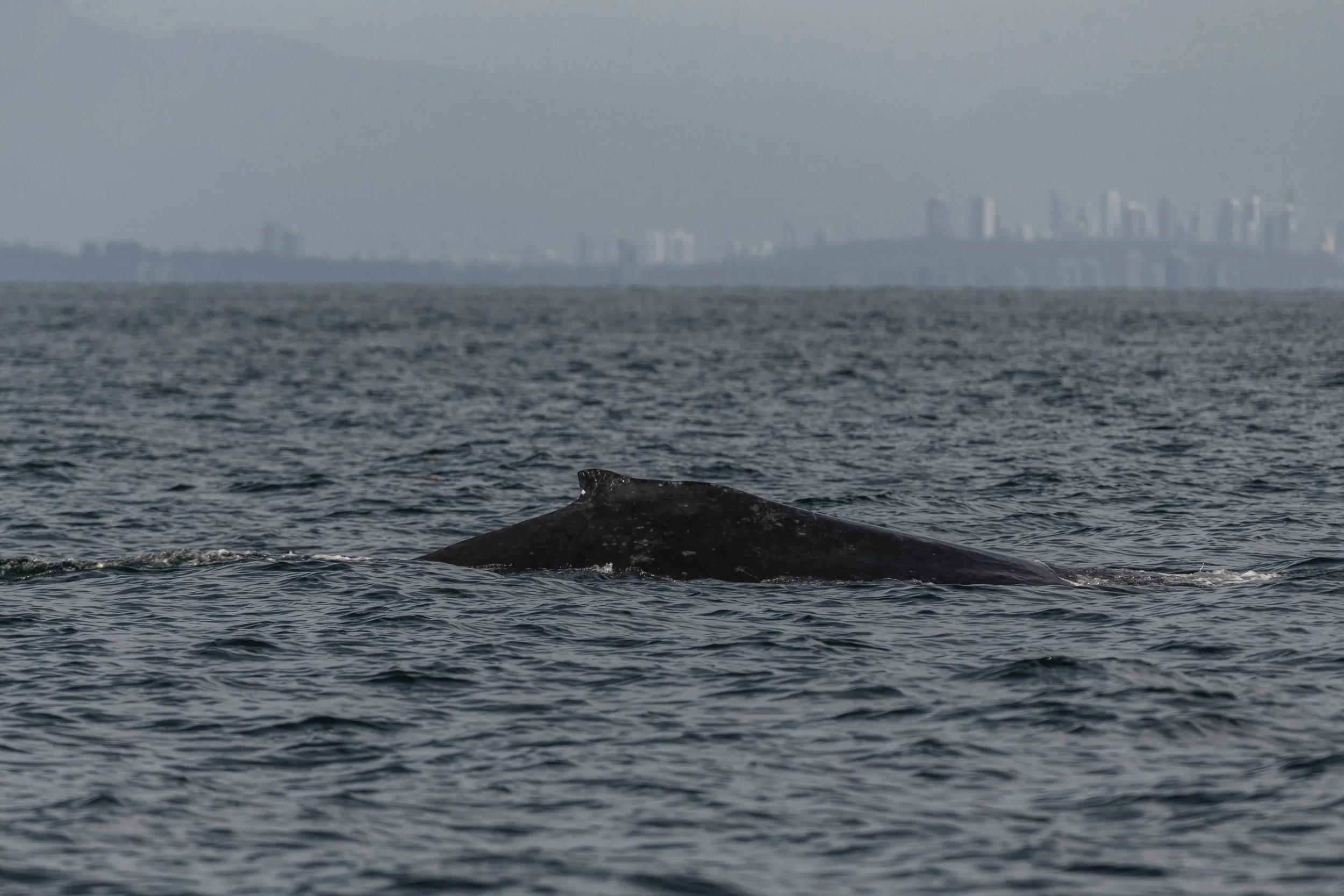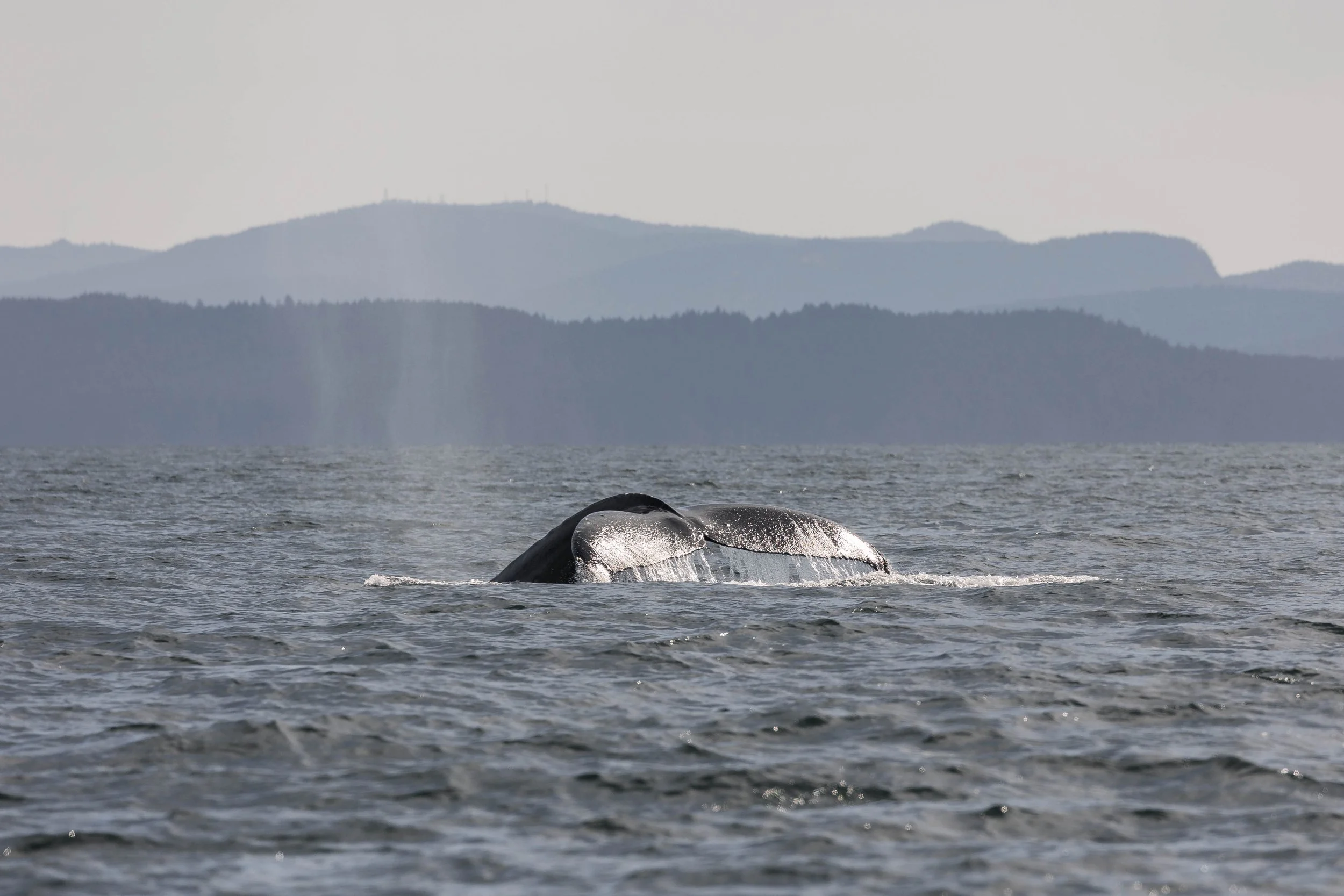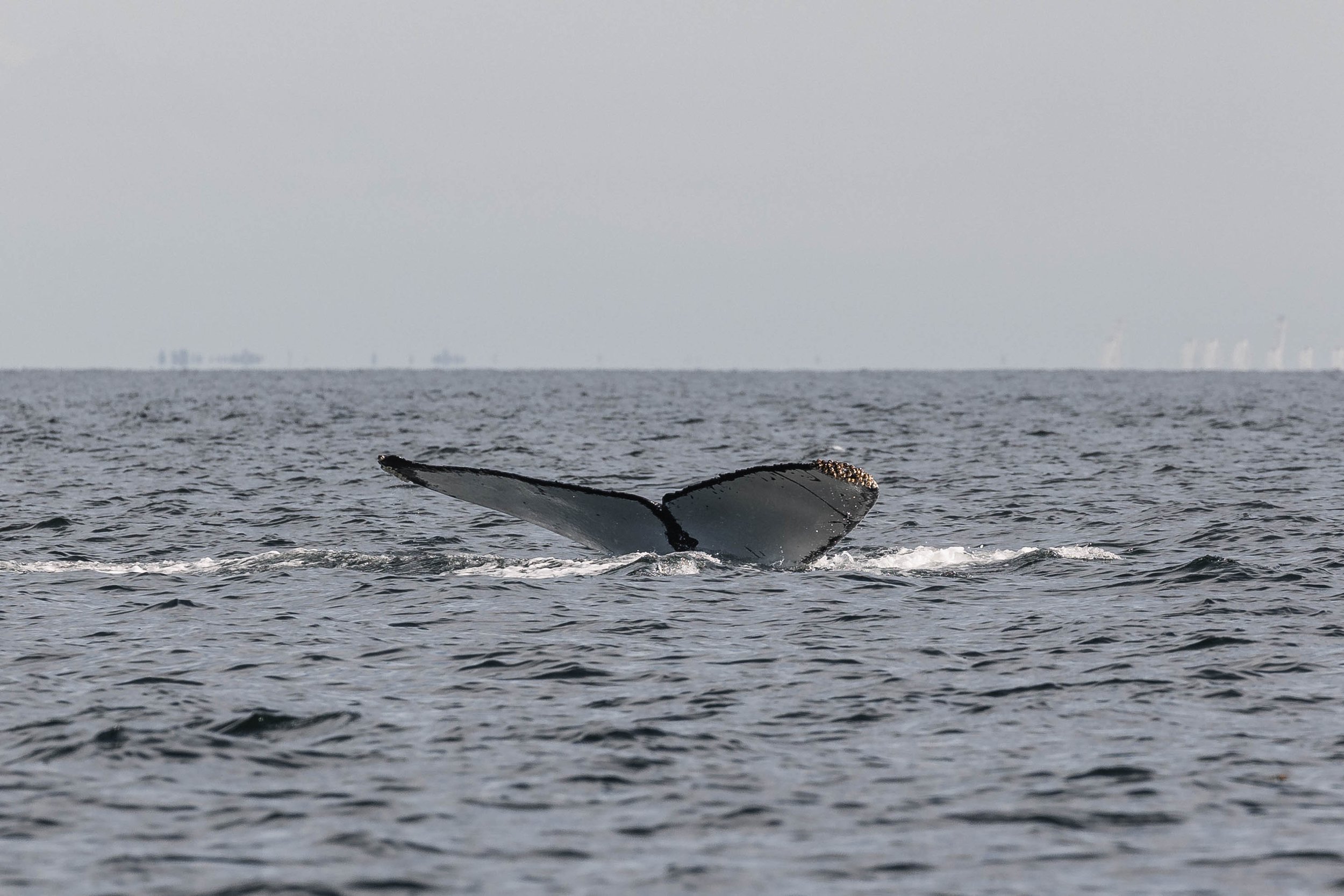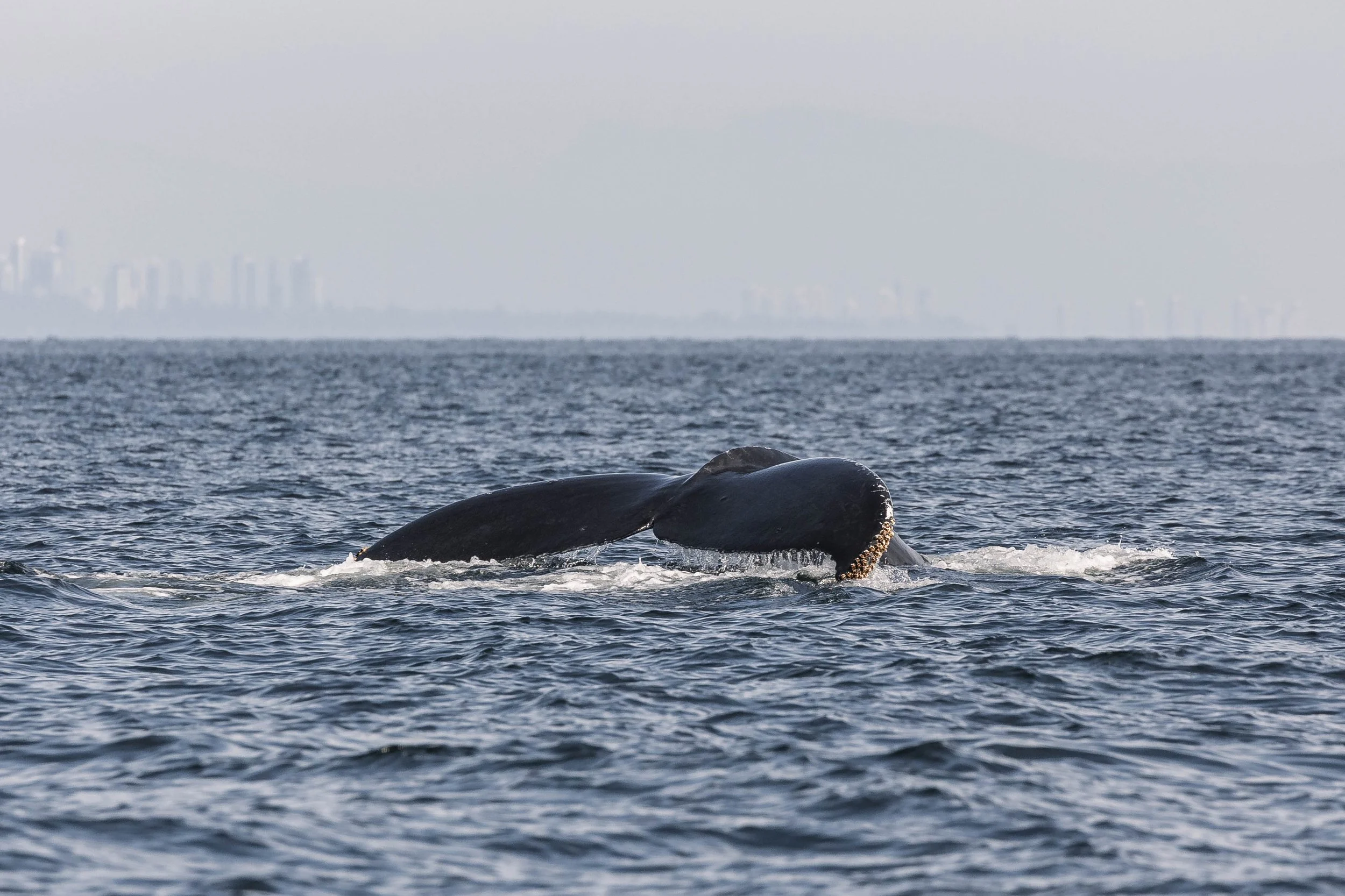September 19, 2025 - The T090s inside the Islands, plus humpback whale Scrimmage in the Strait
The day began with two of our vessels departing Nanaimo Harbour, heading south to investigate a report of orca travelling through the area. It didn’t take long before we encountered them — a group of four Bigg’s (Transient) Killer Whales, identified as the T090s.
T090 Eagle ♀ (1980)
T090B Piglet ♂ (2006)
T090C Tigger ♀ (2010)
T090D Kanga ♀ (2017)
Bigg’s orca are mammal-eating and differ significantly from their fish-eating relatives, the Resident orca. They often travel in small, tightly bonded family groups and rely on stealth and cooperation to hunt prey such as seals, sea lions, and porpoises. While this group was initially travelling in a relaxed formation, their behaviour soon shifted, their movements became quicker and more erratic, and they began changing direction frequently. These are typical signs that orca are engaged in a hunt.
Each member of a Bigg’s orca pod consumes between 200 and 500 pounds of food per day, depending on age and size. Cooperative hunting ensures the group’s success, and when a kill is made, the meal is shared among all members. This sharing reinforces social bonds within the pod and supports younger or less experienced individuals. In this case, the T090s appeared unsuccessful in their attempt, as they did not pause to feed or share prey at the surface.
Their travel route took them through Gabriola Pass, a narrow tidal channel between Gabriola and Valdes Islands. The strong currents in this area can exceed several knots, creating highly productive marine conditions. These mixing waters support dense prey populations, which in turn attract predators like orca. Once through the pass, the T090s continued northward along the outer coastline of Gabriola Island, scanning for further hunting opportunities.
After spending time observing the orca, our vessels continued to Stinky Rock, a well-known haul-out site for marine mammals. Here, we observed a mix of Harbour Seals and Steller Sea Lions, along with numerous seabirds resting on the exposed rocks. For pinnipeds, time spent out of the water is essential for thermoregulation and rest. Despite their thick layers of blubber and fur insulation, prolonged time in cold water causes significant heat loss. Hauling out allows them to maintain body temperature, socialize, and conserve energy between foraging periods.
Leaving the haul-out, our crews continued into the Strait of Georgia, where a tall column of mist signalled the presence of a humpback whale. The individual was identified as Scrimmage (BCZ0488), a regularly sighted whale in our region. Scrimmage appeared to be engaged in feeding behaviour, characterized by deep dives and high tail flukes lifted clear of the surface.
Humpbacks in British Columbia spend their summers in productive northern feeding grounds, where they consume up to one tonne of prey per day: primarily schooling fish and krill. This feeding period is critical for building up energy reserves in the form of blubber, which sustains them during their annual migration to tropical breeding grounds. Scrimmage is known to migrate to Mexico, where food is scarce, and humpbacks rely entirely on stored energy reserves throughout the winter months.
Encounters like these illustrate the ecological richness of the Salish Sea, where strong tidal currents, complex island networks, and high biological productivity support a diverse range of marine species. From top predators such as orca to filter-feeding giants like humpbacks, these waters remain a vital habitat for marine life throughout the Pacific Northwest.
All sightings and photos from the tour were documented by Marine Naturalists Aly Kohlman and Hayleigh Hilbert, whose images are included below.
T090B Piglet surfacing while travelling. Photo by Aly Kohlman.
The three sibilings surfacing togther: T090C Tigger in the lead, T090B Piglet in the middle, and T090D Kanga bringing up the rear. Photo by Aly Kohlman.
T090C Tigger surfacing in the calm water. Photo by Aly Kohlman.
T090D Kanga lunging through the air. Photo by Aly Kohlman.
T090D Kanga surfacing in front of their mom, T090 Eagle. Photo by Aly Kohlman.
T090 Eagle surfacing just behind T090C Tigger. Photo by Aly Kohlman.
T090 Eagle tail slapping with T090B Puglet surfacing in front of her. Photo by Aly Kohlman.
T090 Eagle surfacing in the current of Gabriola Pass. Photo by Aly Kohlman.
T090C Tigger surfacing, with a dog chasing her from shore. Photo by Aly Kohlman.
T090B Piglet surfacing close to shore. Photo by Hayleigh Hilbert.
Look at all the scarring on T090B Piglet’s saddle patch. Photo by Hayleigh Hilbert.
T090B Piglet surfacing just in front of T090C Tigger. Photo by Hayleigh Hilbert.
A great look at T090B Piglet’s eye patch. Photo by Hayleigh Hilbert.
T090C Tigger also showing off their eye patch. Photo by Hayleigh Hilbert.
T090B Piglet surfacing with mom, T090 Eagle. Photo by Hayleigh Hilbert.
T090C Tigger surfacing ahead of T090D Kanga. Photo by Hayleigh Hilbert.
T090 Eagle travelling in the currents. Photo by Hayleigh Hilbert.
Deer spending time on Breakwater Island. Photo by Hayleigh Hilbert.
A Harbour Seal Hauled out on Stinky Rock. Photo by Hayleigh Hilbert.
Fighting amongst the Steller Sea Lions. Photo by Aly Kohlman.
A cuddle pile of Steller Sea Lions. Photo by Aly Kohlman.
A Great Blue Heron fishing off Stinky Rocks. Photo by Aly Kohlman.
Cormorants drying their wings on Stinky. Photo by Aly Kohlman.
A Turkey Vulture soaring overhead. Photo by Hayleigh Hilbert.
Scrimmage going for a dive. Photo by Aly Kohlman.
Scrimmage’s dorsal fin as they surface. Photo by Aly Kohlman.
A fluke waterfall from Scrimmage. Photo by Aly Kohlman.
Scrimmage lifting their tail to dive. Photo by Hayleigh Hilbert.
The beautiful white underside of Scrimmage’s tail. Photo by Hayleigh Hilbert.
We typically look for the stripe on the right side of the tail to ID scrimmage. Photo by Hayleigh Hilbert.
Scrimmage going for a dive. Photo by Hayleigh Hilbert.

